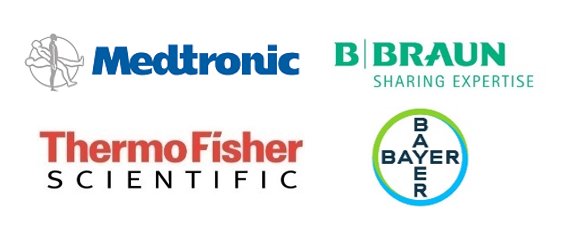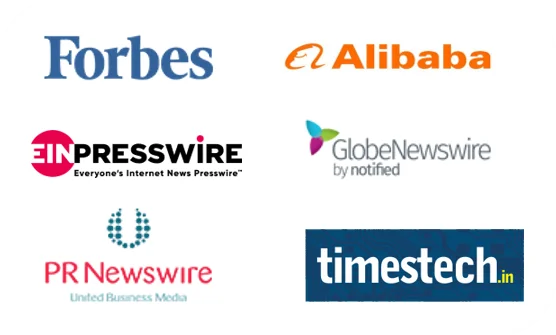Market Overview:
"The global conjugate vaccines market was valued at US$ 12.3 billion in 2024 and is expected to register a CAGR of 11.4% over the forecast period and reach US$ 32.5 billion in 2033."
|
Report Attributes |
Details |
|
Base Year |
2024 |
|
Forecast Years |
2025-2033 |
|
Historical Years |
2021-2024 |
|
Conjugate Vaccines Market Growth Rate (2025-2033) |
11.4% |
Conjugate vaccines play a pivotal role in modern immunization strategies by enhancing the body's immune response to pathogens. These combine weak antigen with a strong carrier protein, stimulating a more robust immune reaction, especially in infants and young children, and aid in safeguarding against infectious diseases such as meningitis, pneumonia, and Haemophilus influenzae type B (Hib) infections. Conjugate vaccines are widely used in pediatric vaccination schedules globally. Growing awareness of effectiveness of these vaccines, increasing incidence of targeted diseases, and government immunization campaigns are driving need for conjugate vaccines.
The global conjugate vaccines market is registering steady revenue growth due to rising healthcare awareness, expanding vaccination programs, and increasing disease prevention efforts. With a focus on preventing bacterial infections such as pneumococcal diseases and meningitis, the market registers high consumption rates, especially in pediatric populations. In addition, continuous advancements in vaccine formulations and delivery systems, along with initiatives from public health organizations, further drive market revenue growth. Regulatory compliance, rigorous analysis, and insights into vaccine efficacy and safety profiles are critical factors determining the dynamic landscape of the global conjugate vaccines market.
Conjugate Vaccines Market Trends and Drivers:
Increasing Disease Awareness: Growing awareness about the importance of vaccination for preventing infectious diseases is leading to higher demand for conjugate vaccines, especially among both healthcare professionals and the general population.
Rising Disease Burden: Increasing prevalence of bacterial infections, particularly in developing countries, is driving the need for effective vaccination strategies. Conjugate vaccines offer enhanced protection against diseases such as pneumonia, meningitis, and sepsis.
Advancements in Vaccine Technology: Ongoing research and development efforts are resulting in improved vaccine formulations and delivery mechanisms, making conjugate vaccines more effective, safer, and easier to administer, thereby boosting market revenue growth.
Government Immunization Programs: Government-led vaccination campaigns and immunization programs, often targeting infants and children, are creating a consistent demand for conjugate vaccines, thereby contributing to market revenue growth.
Expanding Healthcare Infrastructure: Improvements in healthcare infrastructure and access to medical facilities in emerging economies are facilitating the distribution and administration of vaccines, leading to increasing adoption of conjugate vaccines.
Growing Investment and Collaboration: Increasing investments by pharmaceutical companies and biotechnology firms in research and development, as well as collaborations with research institutions and healthcare organizations, are accelerating the development and availability of new conjugate vaccines, further driving market revenue growth.
Conjugate Vaccines Market Restraining Factors:
Complex Manufacturing: Conjugate vaccines require intricate manufacturing processes, leading to higher production costs and potential supply chain challenges.
High Development Costs: Research, clinical trials, and regulatory approvals increase the overall cost of bringing a new conjugate vaccine to market.
Regulatory Hurdles: Stringent regulatory requirements for vaccine safety and efficacy can cause delays in approvals and market entry.
Vaccine Hesitancy: Misinformation, lack of awareness, or concerns about vaccine safety can lead to reduced vaccination rates, affecting market revenue growth.
Limited Access in Low-Income Areas: Infrastructure challenges and economic limitations in certain regions can hamper the distribution and adoption of conjugate vaccines.
Conjugate Vaccines Market Opportunities:
Emerging Markets Expansion: As healthcare infrastructure improves in emerging economies, there is a significant opportunity to introduce and expand conjugate vaccine usage to address a wider range of infectious diseases.
Aging Population Focus: Conjugate vaccines are not limited to pediatric applications. Targeting vaccine-preventable diseases among the elderly population presents a promising avenue for revenue growth.
Combination Vaccines Demand: The market players can capitalize on the demand for combination vaccines that protect against multiple diseases, by offering convenience to patients and healthcare providers.
Travel Vaccination Needs: Growing international travel demands robust protection against diseases endemic to specific regions, creating a market for travel-related conjugate vaccines.
Pandemic Preparedness: Experience gained from managing pandemics such as COVID-19 highlights the importance of vaccine readiness. Investments in research and development for potential outbreak-causing pathogens can be lucrative.
Public-Private Partnerships: Collaborations between governments, non-profit organizations, and pharmaceutical companies can open new avenues for research funding, production, and distribution, driving market revenue growth.
Research and Development (R&D) Investment: Continuous investment in research and development to improve vaccine efficacy, safety, and delivery methods can lead to breakthrough products with substantial market potential.
Targeting Antibiotic-Resistant Strains: As antibiotic resistance grows, vaccines become a crucial tool in preventing infections that are becoming harder to treat, creating a demand for these vaccines.
Conjugate Vaccines Market Segmentation:
By Product Type:
- Monovalent Conjugate Vaccines
- Multivalent Conjugate Vaccines
By Vaccine Type:
- Pneumococcal Conjugate Vaccine
- Meningococcal Conjugate Vaccine
- Haemophilus Influenzae Type B (Hib) Conjugate Vaccine
- Diphtheria-Tetanus-Pertussis (DTP) Conjugate Vaccine
- Others
By Age Group:
- Pediatrics
- Adults
By Application:
- Prevention of Pneumonia
- Meningitis Prevention
- Haemophilus Influenzae Type B (Hib) Infection Prevention
- Others
By End-Use:
- Government Institutions
- Private Sector
By Distribution Channel:
- Hospitals & Clinics
- Retail Pharmacies
- Online Pharmacies
Conjugate Vaccines Market, By Region:
North America:
- United States
- Canada
Asia Pacific:
- China
- India
- Japan
- Australia & New Zealand
- South Korea
- Association of Southeast Asian Nations (ASEAN)
- Rest of Asia Pacific
Europe:
- Germany
- The U.K.
- France
- Spain
- Italy
- Russia
- Poland
- BENELUX (Belgium, the Netherlands, Luxembourg)
- NORDIC (Norway, Sweden, Finland, Denmark)
- Rest of Europe
Latin America:
- Brazil
- Mexico
- Argentina
- Rest of Latin America
The Middle East & Africa:
- Saudi Arabia
- United Arab Emirates
- South Africa
- Egypt
- Israel
- Rest of MEA (Middle East & Africa)
Regional analysis of the global conjugate vaccines market reveals key regions and countries with significant potential. Regional analysis reveals strong demand across Asia Pacific due to increasing population and robust healthcare investments. North America and Europe register steady growth due to established healthcare systems. Developing countries register increasing adoption, aided by government initiatives and collaborations. These trends collectively contribute to progressive expansion and market revenue growth.
Leading Companies in Conjugate Vaccines Market & Competitive Landscape:
The global conjugate vaccines market features a competitive landscape characterized by prominent pharmaceutical companies and biotech firms. Key players focus on research and development to enhance vaccine formulations and delivery methods, aiming for higher efficacy and safety. Strategic collaborations, mergers, and acquisitions are common strategies to expand market presence. Robust regulatory compliance and adherence to international quality standards remain paramount. Players also invest in public awareness campaigns to emphasize disease prevention benefits.
Company List:
- Pfizer Inc.
- GlaxoSmithKline plc (GSK)
- Sanofi Pasteur
- Merck & Co., Inc.
- Novartis AG
- Johnson & Johnson
- Serum Institute of India
- Bharat Biotech International Limited
- Sinovac Biotech Ltd.
- Beijing Tiantan Biological Products Corp.
- Biological E Limited
- Astellas Pharma Inc.
- CSL Limited
- Daiichi Sankyo Company, Limited
- Seqirus (a subsidiary of CSL Limited)
Research Scope
|
Report Metric |
Report Details |
|
Conjugate Vaccines Market Size available for the years |
2021-2033 |
|
Base Year |
2024 |
|
Forecast Period |
2025-2033 |
|
Compound Annual Growth Rate (CAGR) |
11.4% |
|
Segment covered |
By Product Type, Vaccine Type, Age Group, Application, End-Use, Distribution Channel, and Region |
|
Regions Covered |
North America: The U.S. & Canada Europe: Germany, The U.K., France, Spain, Italy, Russia, Poland, BENELUX, NORDIC, & Rest of Europe Asia Pacific: China, India, Japan, Australia & New Zealand, ASEAN, & Rest of Asia Pacific Latin America: Brazil, Mexico, Argentina, & Rest of Latin America The Middle East & Africa: Saudi Arabia, United Arab Emirates, South Africa, Egypt, Israel, and Rest of MEA (Middle East & Africa) |
|
Fastest Growing Country in Europe |
Germany |
|
Largest Market |
North America |
|
Key Players |
Pfizer Inc., GlaxoSmithKline plc (GSK), Sanofi Pasteur, Merck & Co., Inc., Novartis AG, Johnson & Johnson, Serum Institute of India, Bharat Biotech International Limited, Sinovac Biotech Ltd., Beijing Tiantan Biological Products Corp., Biological E Limited, Astellas Pharma Inc., CSL Limited, Daiichi Sankyo Company, Limited, Seqirus (a subsidiary of CSL Limited), and among others. |
Frequently Asked Question
What are the key factors driving revenue growth of the global conjugate vaccines market?
Revenue growth of the global conjugate vaccines market is driven by factors such as increasing awareness of vaccine-preventable diseases, expanding immunization programs, advancements in vaccine technology, rising disease burden, and government initiatives promoting public health and disease prevention.
Which regions/countries register significantly high demand in the global conjugate vaccines market?
High demand for conjugate vaccines is observed across regions such as North America, driven by established healthcare systems, and Asia Pacific, particularly in countries such as China and India due to large populations, increasing healthcare investments, and expanding immunization campaigns.
What are the key challenges faced by companies in the global conjugate vaccines market?
Companies in the global conjugate vaccines market face challenges including complex manufacturing processes, high research and development costs, regulatory hurdles, competition from established players, and addressing vaccine hesitancy and misinformation among certain people.
What are the emerging trends observed in the global conjugate vaccines market?
Emerging trends observed in the global conjugate vaccines market include development of tailored vaccination schedules, increased focus on emerging and antibiotic-resistant diseases, adoption of combination vaccines, advancements in vaccine formulation and delivery systems, and global collaboration for disease eradication efforts.
How are government initiatives supporting revenue growth of the global conjugate vaccines market?
Government initiatives are playing a crucial role in revenue growth of the global conjugate vaccines market by funding research and development, subsidizing vaccine costs, implementing immunization programs, and conducting awareness campaigns to educate the public about the importance of vaccination and disease prevention.

